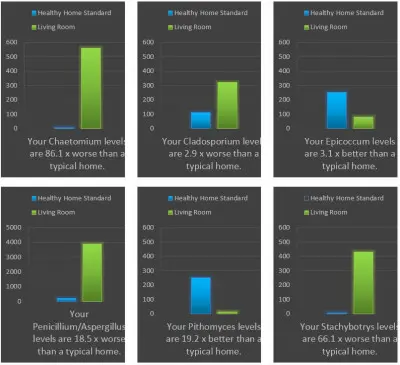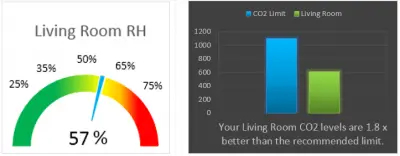Mold Testing and Inspections in Seattle
At Environix, our team of experienced contractors provides quality mold inspection services in Seattle and the surrounding areas. Our goal is not to get repeat customers but just the opposite—if we do our job right, you won’t have to worry about calling us again.
We believe that every aspect of mold inspections should work towards a permanent solution. If you think you may have a mold problem in your home, get in touch today and our team in Seattle will be happy to help.
Analyzing the Traditional Approach to Mold Inspections
The traditional approach to mold inspections carries a rather linear trajectory. In most cases, it consists of:
- Collecting samples
- Sending them to a laboratory for testing
- Forwarding the results to the client
We opened our doors more than 15 years ago, and we realized right away that the standard approach to mold inspections wasn’t doing much for our customers. Although clients received a report showing them the type and quantity of mold, they still didn’t know how to fix the problem.
It’s important to know that mold testing does serve a purpose. It can help identify the mold species and give you an idea of how bad the issue is. Remember that mold is ubiquitous, but knowing how many spores are floating in your house can help assess the quality of your air.
That said, a lab test alone doesn’t answer the question: how do you stop the mold from coming back?
Mold Testing and Inspections the Environix Way
Mold only thrives in environments that have excess humidity. This means that the best and only way to solve a mold problem is to find the source of moisture and to fix it permanently.
In some cases, leaky pipes or groundwater flooding can cause liquid water intrusion. In others, the humidity problem occurs due to inadequate ventilation. Taking the steps to remove all contaminants and prevent moisture accumulation is the only permanent solution to the issue.
Our Seattle mold inspection protocol can be summarized in five steps:
- Confirm mold is growing in the house
- Determine the scale of the problem
- Find the source of moisture
- Remove the mold and clean the affected area
- Apply permanent moisture prevention solutions
If you need mold inspection services in Seattle and surrounding areas, get in touch with us and our team will be glad to assist you
Common Questions About Mold Testing and Inspections
There are many myths and misconceptions surrounding mold and the effects it has on human health. Here are some common questions about mold inspections:
Is Mold Dangerous for Humans?
The short answer is yes, but it’s important to put it into context. The biggest health concerns associated with mold are asthma and allergies. Other infections can occur, but these are not at all common, and they only attack those with compromised immune systems.
For most people, allergies and asthma are the biggest threats. And, the best way to determine the quality of your indoor air is to hire a reliable mold testing company.
Do I Have to Worry About Mold if It’s Natural?
Mold is similar to other natural particles like pollen. It comes from natural sources, but millions of people experience negative reactions when exposed to this particle.
If you are allergic to pollen or are asthmatic, having flowers all over your house may not be the best idea. Sure, there’s a bit of pollen in every home, but a dramatic increase in volume can have terrible effects on these folks.
The same thing goes for mold. If you have high humidity levels in a part of your home, you may unknowingly increase the number of spores in your house. Which, in turn, can be bad news for folks who are allergic to mold or have asthma.
Project Type > Whole House Mold Inspection in the Seattle Area
PROJECT SUMMARY
REASON FOR INSPECTION:
- This inspection is to determine the cause and severity of the mold growth in the home.
PROPERTY DESCRIPTION:
- This single family residential property was built in 1954 and is 900 ft².
CAUSE OF MOLD:
- The cause of the mold growth in the home is a direct result of elevated humidity causing condensation and consequently, mold growth.
LABORATORY RESULTS
ANALYSIS OF YOUR RESULTS:
- Extreme Amplification: Mold spores were detected at levels many times greater than the threshold, indicating a site of high mold amplification and growth.
The most likely contributor of the elevated mold spores is:
- Elevated humidity.
- Significantly dirty carpet and overall interior conditions.
JOBSITE PHOTOS
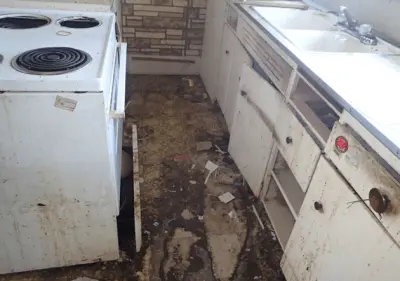
Kitchen.
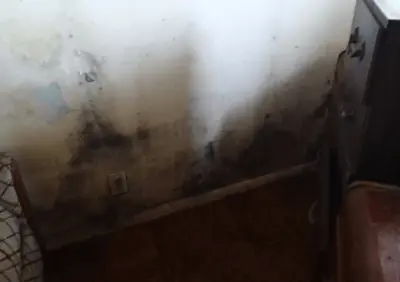
Mold growth on wall.
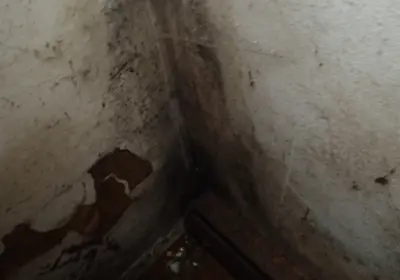
Water damaged walls.
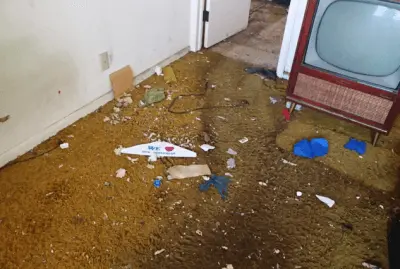
Unsalvageable carpet.
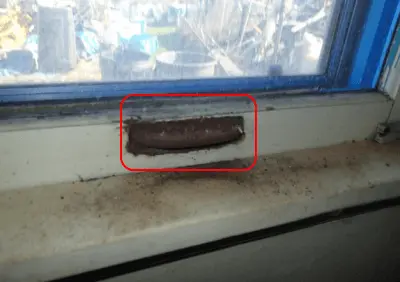
Evidence of extremely high humidity.
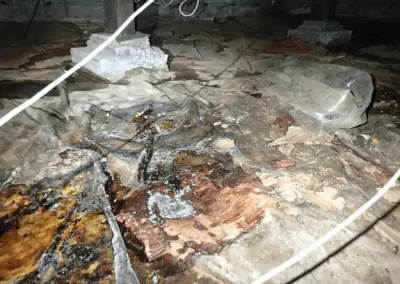
Standing water in the crawlspace.
RELATIVE HUMIDITY & CO2 READINGS:
VENTILATION:
OBSERVATIONS:
- Relative humidity levels are elevated. Generally, indoor RH levels should remain under 55% or under 50% in homes with poorly insulated exterior walls.
- CO2 levels are normal. While not a direct health problem, elevated CO2 levels are an indication of stale indoor air and poor ventilation. This can lead to a buildup of pollutants and humidity, which can cause mold growth.
- Home is inadequately heated. A minimum indoor temp of 65ºF must be maintained to minimize excessive humidity and mold growth.
- Home suffers from insufficient ventilation. This leads to a buildup of indoor pollutants and increases the relative humidity, creating conditions conducive to mold growth and dust mites.
LOCATION: Interior of Home
GENERAL OBSERVATIONS:
- The home is vacant at this time. The prior tenant of the home was apparently a hoarder. Evidence of severely dirty and dusty walls and flooring. Dirt and dust can provide a growth medium for mold to settle on, and given a humid environment, mold will blossom there. The home reflects evidence of a general lack of housekeeping that is contributing to the mold growth.
- Carpeting in home is old and a likely repository of mold spores. Carpeting can hold mold spores for long periods of time, long after the original source of the mold growth has been removed.
- Kitchen and bathroom are both in severe disrepair.
Recommendations:
- Due to the systemic mold growth throughout the structure, the home is unfit for occupancy at this time.
- See ventilation section above for recommendations to eliminate condensation. Install a constant flow fan in the bathroom as well as a kitchen range hood ducted to the exterior.
- Remove and replace all carpeting in the home.
- Prime and repaint all walls in the home with a high quality gloss latex paint.
- Most of the walls are constructed of a plaster and lathe, which can be resilient to a water intrusion. Assessment of the condition of the plaster will have to be made after the contents have been removed and the walls have been cleaned. Walls which have loose plaster will have to be repaired, the others can be cleaned and repainted.
- Remodel the kitchen and bathroom.
- Consider replacing all the windows in the home with double paned vinyl framed windows.
- Keep contents and furniture a minimum of 2-3 inches away from exterior walls to help prevent mold growth on these surfaces.
CRAWLSPACE OBSERVATIONS
MOISTURE:
STATUS:
- Standing water noted in portions of the crawlspace. Standing water greatly increases the humidity in the crawlspace and creates conditions conducive to mold growth. This appears to be groundwater intrusion.
- A water leak is suspected in the crawlspace. This needs further investigation.
CAUSE:
The water intrusion is likely from one of two possibilities:
- First, the water may be ground water which comes up through exposed ground in the crawlspace.
- Second, the water may be from a leaking main water supply to the home.
Recommendations:
- Unfortunately, determining which of these two sources may prove to be difficult. Try turning off the water supply to the home and then in two weeks see if the conditions have changed. If the conditions remain then it is likely a ground water intrusion.
- If it proves to be a ground water intrusion then a sump pump will need to be installed in order to keep the ground water below the level of the crawlspace.
- If it proves to be the main water line, then repair of that line will be necessary.
MOLD GROWTH:
INSULATION:
- Insufficient – Crawlspace insulation is less than R-30, not securely attached, does not make full contact with subflooring and/or does not provide complete coverage.
- Damaged – Insulation is damaged throughout the crawlspace area and must be removed. Damage is primarily caused by rodents.
Recommendations:
- Remove and replace all damaged insulation.
AIR SEALING:
- Unsealed – Multiple air gaps present between crawl space and lower floor of building. This greatly reduces the energy efficiency of the home by allowing cold outside air to infiltrate the heated portion of the home.
Recommendations:
- Consider air sealing all major subfloor penetrations.
VAPOR BARRIER:
STATUS:
- Contaminated – Vapor barrier shows evidence of past flooding.
- Soiled from water leak – Vapor barrier shows evidence of the water leak.
DETAILS:
- Likely contributing to mold or odor problems in home.
Recommendations: - Replace vapor barrier.
OTHER CONTAMINATION & PROBLEMS:
- Rodents – Evidence of past or present rodent infestation was noted. This requires the removal and replacement of all contaminated building materials. Contaminated insulation and vapor barrier may harbor bacteria, parasites and odors due to rodent feces, urine, and other associated debris
- Electrical problems. The rodents appear to have damaged the electrical wiring in the crawlspace.
Recommendations:
- A pest control specialist is necessary to provide a plan to resolve the current infestation and prevent future pest infestations.
- A qualified electrician is necessary to address the damaged electrical wiring.
CRAWLSPACE HATCH:
- Intact – Crawlspace hatch appeared to sufficiently cover and protect the access to the crawlspace.


